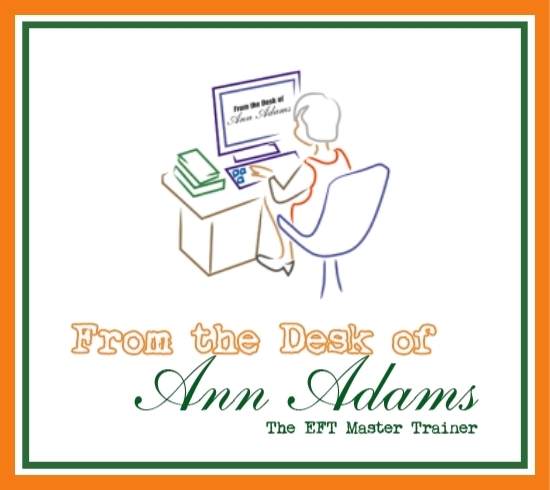-
Difference in TFT and EFT

What’s the difference between TFT and EFT? – Another question from a student. Primarily 3 differences. 1) The order of points to tap matters (TFT) – Doesn’t matter (EFT). 2) Use muscle testing to “diagnose” which point to tap in what order (TFT) – Just tap all the points (EFT). 3) Doesn’t use words as
-
The 1 – 2 – 3 of EFT Process

There is a clear process to follow when using EFT, no matter the client or the situation. What varies is the application and modification of that process with each client. Particularly new practitioners are tempted to just start tapping with everyone. However, if you’ve watched many of Gary’s videos of working with a client you’ll
-
Question: Tapping for different issues.

Here is a recent question from an EFTer that I believe is relevant to many of you, “How close together can you tap for different issues.” Ordinarily you would complete one event at the time that deals with your issue. You tap on all aspects until that event has a neutral impact on your emotions,
-
Accept Yourself – in THIS Moment

Many folks balk at the default acceptance part of the EFT Setup, “I deeply and completely accept myself.” The Setup doesn’t mean that you now will accept everything about yourself forever after. THAT would be tough for everyone. There are lots of variations on acceptance to sneak in and modify the Setup without inviting immediate
-
Blocks to success

All changes are scarey and while we may say we do want to change at least part of us doesn’t really want to change. Changes have consequences – some good sometimes not so good. That devil (our problem situation) we know is at least familiar – we’ve worked out ways to deal with it –
-
Don’t Forget the PPP

The Personal Peace Procedure can be very useful both when using EFT on your own and when you work with a client. Most people describe their troubles with one or more fairly general presenting complaints such as: I’ll never find anyone, I am always passed over, I am miserable, I’m really conflicted about this decision,
-
Introducing EFT

Explaining EFT to clients is the first step to using it. Because finding and developing a “specific” event, emotion or physical feeling is so important when using EFT I stress that aspect of EFT from the very beginning. Here’s the essence of what I say: EFT stands for Emotional Freedom Techniques. That’s a great name
-
Trainers: How well do your students remember?

You worked really hard during your EFT workshop to get all of the EFT concepts across clearly and give your students a meaningful experience. So now your students know EFT, right? Um… well maybe not so much. Studies show that after a workshop or class, students may remember only 20 to 40% of the major
-
So you learned EFT from a website…

If you Google “Emotional Freedom Techniques,” you get something like a million results. Maybe you heard of EFT and learned how to use it on the web. There are some pretty good free resources. Some of the videos of the tapping points are especially nice. From a mix of websites, maybe you’ve learned some of
-
Stealthy Tapping

I teach all my clients “stealthy tapping.” We simply play around with various natural touches that can be used anywhere anytime. Rubbing our finger under our nose, or posing with a bent finger on our chin, or scratching our heads or under our arms, or placing our fingers around our eyes, or holding our palm
Search
About
Lorem Ipsum has been the industrys standard dummy text ever since the 1500s, when an unknown prmontserrat took a galley of type and scrambled it to make a type specimen book.
Lorem Ipsum has been the industrys standard dummy text ever since the 1500s, when an unknown prmontserrat took a galley of type and scrambled it to make a type specimen book. It has survived not only five centuries, but also the leap into electronic typesetting, remaining essentially unchanged.
Archive
- December 2023
- August 2020
- August 2017
- June 2016
- May 2016
- April 2016
- February 2016
- January 2016
- June 2015
- May 2015
- December 2014
- November 2014
- October 2014
- August 2014
- July 2014
- June 2014
- May 2014
- March 2014
- January 2014
- December 2013
- October 2013
- September 2013
- July 2013
- June 2013
- May 2013
- February 2013
- August 2012
- May 2012
- November 2011
- October 2011
- September 2011
Recent Posts
Tags
Gallery








